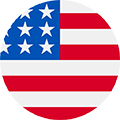My Cart: 0 item(s)
| Code 61 Elbow NPTF Thread | |||||||||||||||||
|---|---|---|---|---|---|---|---|---|---|---|---|---|---|---|---|---|---|
| O-Ring Part # | Flat Face Part # | Pad Size | A | B | C | D | E | F | G | H | J | K | L | M | N UNC-2b | Mounting Hardware | |
| O-Ring | SHCS | ||||||||||||||||
| W168-12-12 | W170-12-12 | 0.75 | 1.69 | 2.56 | 0.875 | 1.875 | 2.28 | 1.44 | 1.25 | 0.875 | 1.25 | 0.752 | 0.75 | 0.406 | 3/8-16 | 214 | 3/8-16X2.00 |
| W168-16-16 | W170-16-16 | 1 | 1.94 | 2.75 | 1.031 | 2.062 | 2.62 | 1.66 | 1.5 | 1.062 | 1.56 | 1.002 | 1 | 0.406 | 3/8-16 | 219 | 3/8-16X2.25 |
| W168-20-20 | W170-20-20 | 1.25 | 2.19 | 3.12 | 1.188 | 2.312 | 3 | 1.91 | 1.81 | 1.188 | 1.75 | 1.252 | 1.25 | 0.469 | 7/16-14 | 222 | 7/16-14X2.75 |
| W168-24-24 | W170-24-24 | 1.5 | 2.56 | 3.69 | 1.406 | 2.75 | 3.33 | 2.05 | 2 | 1.312 | 2.115 | 1.502 | 1.5 | 0.531 | 1/2-13 | 225 | 1/2-13X3.00 |
| W168-32-32 | W170-32-32 | 2 | 3.06 | 4.33 | 1.688 | 3.062 | 3.81 | 2.28 | 2.5 | 1.656 | 2.49 | 2.002 | 2 | 0.531 | 1/2-13 | 228 | 1/2-13X3.50 |
Questions & Answers
Popular Questions
10 months ago
10 months ago
The numbers on hydraulic fittings refer to the size and type of the fittings. They can indicate the fitting's thread size, pitch, and compatibility with other components. This information was sourced from "Hydraulic Hose Fittings Guide: How to Find the Right One" on the Hydraulics Direct website (https://www.hydraulicsdirect.com/Unde...), specifically under the sections "Understanding the Numbers" and "Choosing the Right Fitting". See full answer »
10 months ago
10 months ago
The L and S series refers to metric Din type fittings. Which means light and heavy series. See full answer »
10 months ago
10 months ago
To determine the size of hydraulic fittings you need, you should measure the inside diameter (ID) and outside diameter (OD) of your hoses or tubes, as well as the thread size if applicable. This can be done using a caliper or other measuring tool. This information can be found on https://www.hydraulicsdirect.com/How-..., specifically under the sections "How to Measure Threads" and "Identifying Thread Pitch/Diameter". See full answer »
10 months ago
10 months ago
The standard for hydraulic fittings is typically governed by organizations such as the International Organization for Standardization (ISO) and the Society of Automotive Engineers (SAE). Common standards include ISO 8434 for metallic tube connections and SAE J516 for hydraulic hose fittings, which ensure compatibility, reliability, and safety in hydraulic systems. See full answer »
10 months ago
10 months ago
Hydraulic fittings come in various types, including NPT fittings, JIC fittings, ORFS fittings, BSP fittings, Metric fittings, and Flange fittings. Each type has unique characteristics and uses, designed to withstand high pressure, vibrations, and corrosive materials. This information was sourced from https://www.hoseassemblytips.com/unde... under the section "Different types of hydraulic fittings" and https://www.hydroservice.com/Differen... under the "Types of Hydraulic Fittings" section. See full answer »
9 months ago
9 months ago
The numbers on a hydraulic fitting typically indicate the fitting's size, pressure rating, and thread type. These specifications ensure compatibility and proper function within a hydraulic system by matching the fitting to the corresponding hose or component. See full answer »
10 months ago
10 months ago
A #8 hydraulic fitting typically refers to a 1/2 inch size fitting. This is according to the standard Dash Size system used in the industry to indicate hose and coupling size. See full answer »
10 months ago
10 months ago
To identify different hydraulic fittings, examine key characteristics such as thread type (e.g., NPT, BSP, JIC), size, and sealing method (e.g., O-ring, metal-to-metal). Additionally, using calipers to measure thread diameter and pitch, and referring to manufacturer specifications or fitting identification guides can help ensure accurate identification. See full answer »
9 months ago
9 months ago
The pressure rating for ORF (O-Ring Face Seal) fittings can vary depending on the specific fitting and material, but they typically can handle pressures up to 6,000 psi (414 bar) for steel fittings and up to 3,000 psi (207 bar) for stainless steel fittings. Always consult the manufacturer's specifications for precise ratings, as they can differ based on design and application. See full answer »
9 months ago
9 months ago
Sure! The maximum pressure for JIC (Joint Industry Council) fittings typically ranges from 1,000 to 5,000 PSI, depending on the size and material of the fitting. It's important to consult the manufacturer's specifications for the exact pressure rating for a specific fitting type and application. See full answer »




